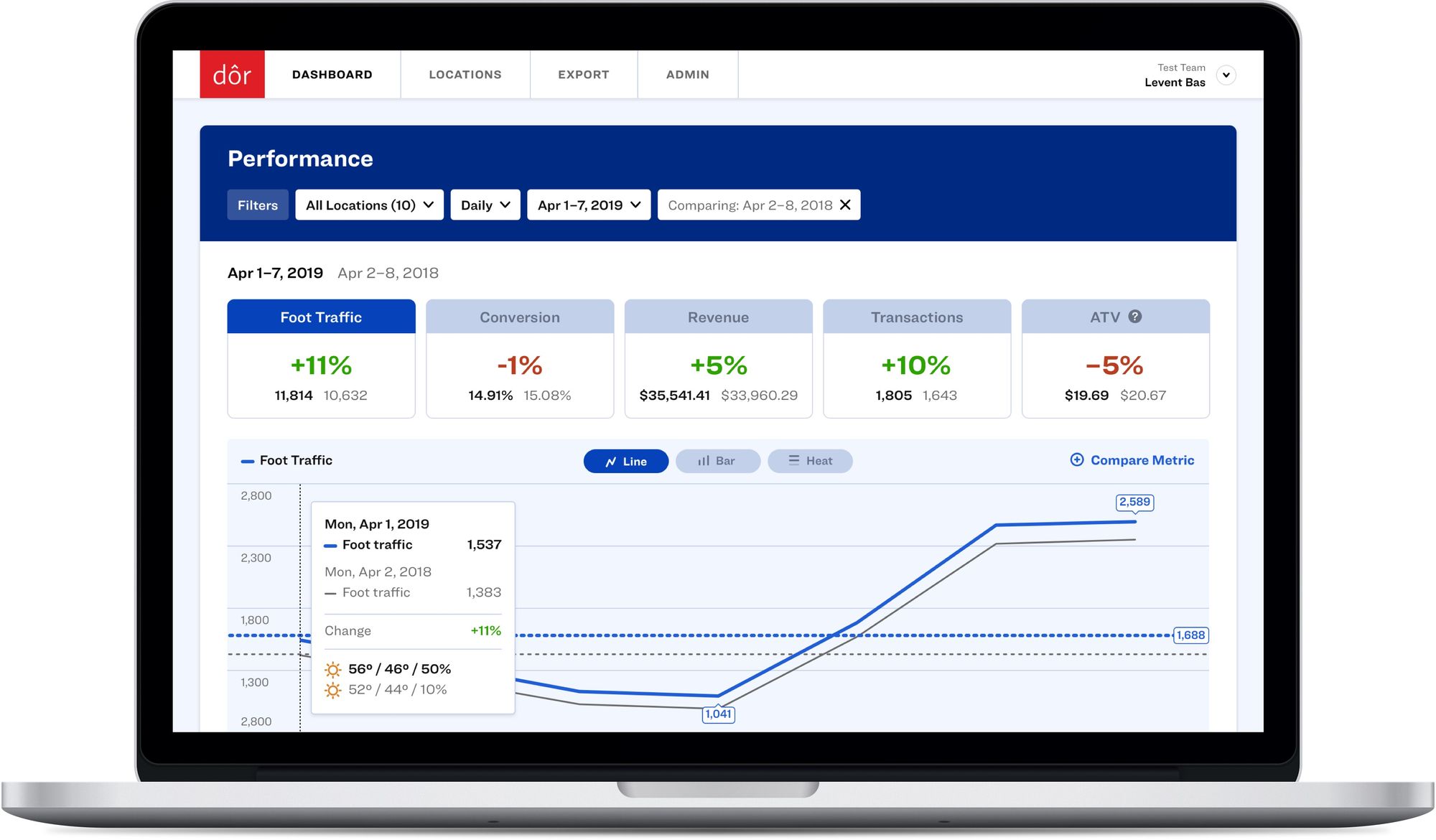No matter how your business is thriving, you always want to keep a sustainable business lasting for years. That’s why you’d like to keep every dollar you so justly earned. Sometimes things may not go the way you want, and some of your prices may be lavishing for your customers. Especially during unprecedented times, like a financial crisis or a pandemic, you may need more cash much faster. That’s when retail markdowns become necessary to sell these items.
Retail markdowns may be scary for some, as it seems that you’re losing money. However, if you know how to choose the correct percentage and the right products, they’ll become revenue generators.
Let’s have a look at what retail markdown is and see steps to create your markdown strategy.

Did you know that a 1% increase in your store’s conversion rate can mean a 10% increase in revenue?
Click here to discover how Dor can help you understand your foot traffic data and make more profitable business decisions.
Ready to purchase? Complete your purchase in just minutes!
What does retail markdown mean?
Retail markdown means a reduction or devaluation in the initially planned price of the product. It's commonly applied to a product or products which are not selling as fast as necessary, and you want to increase the momentum of sales.
What’s the difference between a markdown and a discount?
Markdown and discount are often confused with one another.
It's safe to say that every discount is a markdown, but every markdown is not a discount.
Both may have the same meaning for the customer, but they are entirely different for a retailer. Markdown reduces the product’s price while a discount is often applied at the checkout and is for wholesale.
Let’s say you’re a shoe retailer who has five different styles of shoes, each having a $25 original price point. One of them performs poorly, so you gave it a 20% markdown. The new price is $20. If the customer buys this item, she’ll pay $20.
However, if there is a loyalty discount at the retail store worth $5, she’ll spend $15 instead. If she purchases the other style without the markdown, she’ll pay $20 instead of $25 because of her loyalty discount. The most popular discount types are friends & family discount, employee discount, and loyalty discounts. Depending on your business type, you may reward your frequent customers with the highest number of invoices, etc.
Why is it important to have a markdown strategy in retail?

Retail markdown strategy is crucial because it has a direct impact on sales increase and stock liquidation. Without a markdown strategy, you may face the apparent truth of over-stocked store shelves, lower sale figures, and a loss in purchasing power. The opportunity cost is since your store will be filled with idle inventory, you won’t be able to purchase new products to offer to your customers.
Additionally, a markdown strategy is an effective way to bring more customers to your retail store. This helps you create a chance to sell more to these customers. They may come for your decreased margin but end up increasing your profit in the end.
10 steps to create a markdown strategy in retail
1. Monitor your sales closely. Remember what they say: “If you can’t measure it, you can’t improve it''.

2. Make sure you track week to cover and month to cover data. This helps you realize when the pace of your sales is dropping.
3. Approach this strategy on the product group level. Try to avoid mass markdown that is valid for all products. You may be facing an unnecessary loss in profit for some of the items.
4. Begin with a smaller percentage of markdown. Remember that you are only testing this markdown strategy, and you may have to lower the price a couple of more times.
Related: 12 Successful Retail Pricing Strategies Every Retailer Should Know
5. Make sure you give enough time before you decide on the markdown. The reason for a slow-selling item may be seasonality or trend.
6. There are different time frames for other product groups. A fast-fashion product life cycle is around 60 days; however, a technology product like an iPhone has a longer time to sell.
7. Using markdown strategy as your primary retail strategy is harmful to your business in the long run. Your customers should not lose their belief in your prices by thinking that you are a discount store. Try to use historical data to enhance your original pricing strategy instead.
8. If you manage multiple stores in different locations, you can create a store-based local markdown strategy. You don't have to apply the same strategy to every location. Especially if you are selling seasonal items like air conditioners, fashion products, or beach towels, this will have to be taken in mind.
9. Watch the retail calendar closely to decide when you should apply the markdown. Events like holiday shopping, Black Friday, etc., can have even more positive outcomes to increase sales.
10. Use the right colors and fonts to display your POPs. It's essential to show your customers your markdown items and use marketing as a traffic-driving force. Approach these markdown times as you would approach an event in your store. The customers should believe that this is a special occasion.
Related: 8 Things to Know About Color Psychology in Retail

Why does the markdown strategy fail?
Markdown strategies fail when it’s poorly planned, managed and interpreted.
Impulsive decision-making leads to more profit loss than necessary. You’ll have to include markdown timing in your yearly plan. Agility is an effective add-on to your planning. Planning plus agility will deliver the best markdown strategy.
Even when you’re planning the retail store design, you have to create a special place for your marked-down items. This will lead your customers in the right direction. Usually, marked-down items stay at the store's back, so the new products are also displayed to the markdown customer.
Markdowns are to be learned from. When you are reviewing your yearly sales, take a look back to when and why you had to make a markdown and the impact on your sales in general.
Avoid relying heavily on excessive markdowns. Your business should be managed better with better pricing strategies than excessive markdowns. Do not forget that it's your profitability that makes your business survive.